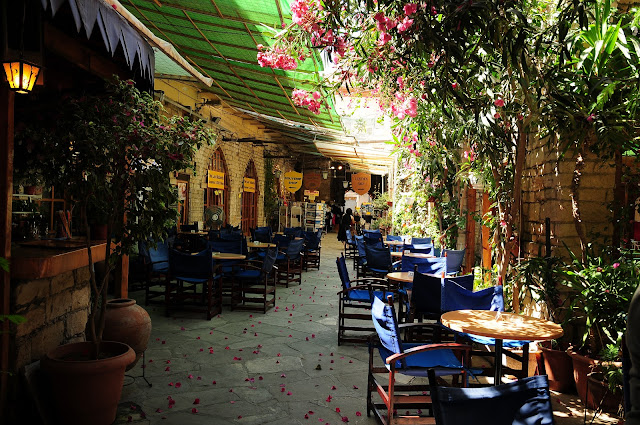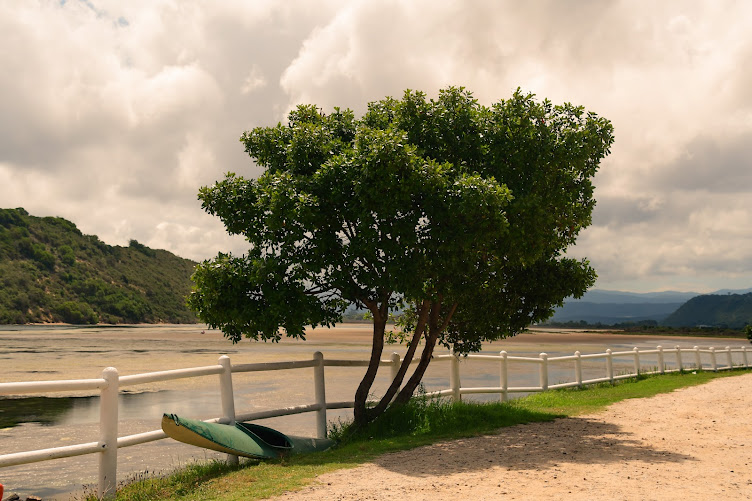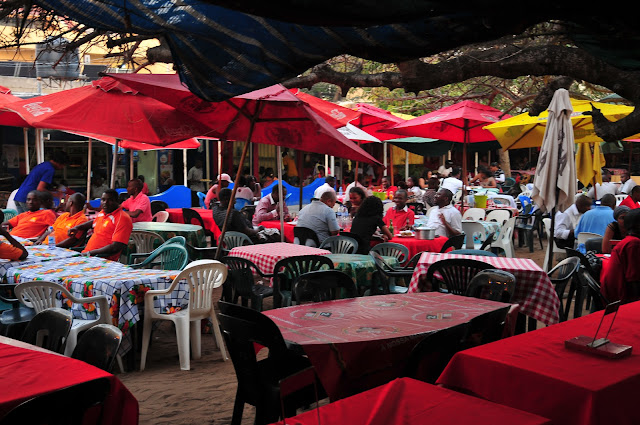“Wherever you may go, always try to arrive with no expectations – then everything becomes an experience to enjoy, savour and treasure. Accept that a foreign country is different and it will enrich and broaden your outlook on life!”

We landed in Larnaca, collected our car (luckily, the driving is on the left as in SA) and drove to Pafos where were booked to stay at the Panaretti Pafos Resort. Cyprus
the cities
At first sight Cyprus Cyprus Cyprus
 Limassol
Limassol
One of the many Cyprus Cats!

Nicosia, a 10,000 year old city, was a much longer drive from Pafos but we decided it would be worth a visit. However, we got the fright of our lives whilst walking down Ledra Street, to be suddenly halted by a policewoman demanding our passports. Whoa, are we at the border to Northern Cyprus we asked (there is no barrier at all) only to be told “Yes” rather curtly. We had been warned not to go into Northern Cyprus as we were headed for Greece later in our trip and the Greeks and Turks do not see eye to eye! Whilst the locals appear to walk between the North and South boundaries quite freely now (with passports) and the foreigners were also entering, we decided to err on the side of caution rather than jeopardise our next 3 weeks by a walk down the same street but ruled by the Turks! Nicosia
Our safer option was to go to the 11th floor of the Shacolas building (Ledra Lookout Point) for amazing views (and lots of information) of Nicosia
The President of Cyprus, Demetris Christofias, and Turkish Cypriot leader Mehmet Ali Talat have recently agreed to restart peace talks aimed at reunifying the island. This challenge has defeated generations of peacemakers. A UN peace process ground to halt in 2004, and a programme of confidence-building steps agreed in 2006 has brought few practical results.
The split occurred in 1974, when a Greek-inspired coup prompted a Turkish invasion of the northern third of the island. The Turkish Republic of Northern Cyprus , declared in 1983, is recognised only by Turkey
A trip into the Troodos Mountains
We visited Pedoulas where we bought the most delicious cherries we have ever tasted, from an old man selling at the roadside. Very clever on his part as the village had about 10 mini- markets selling cherries as well! Needless to say, this village is famous for its cherries!
We also visited Prodromos which is the highest settlement in
The village of Galata
Kakopetria - the translation of Kakopetria means “evil rocks”. Many of these mountain villages appeared very deserted as it was not yet full summer when the Cypriots arrive to holiday away from the heat in the cities or the tourists are out in force. The shop-keepers appear desperate to make a sale and one wonders how they survive.
During 2007 a huge fire in central Cyprus
Cultivated vineyards cover a large percentage of Cyprus
from sea level upwards. Most vineyards are located in the southern
Troodos area. Wine drinking appeared to play an important role in daily life, as illustrated on the mosaic of Kato Pafos, dating back to the Roman times. There are approx. 23, 500 hectares of vines under cultivation, with the annual production of 200 million kilos of grapes.
We did not have enough time to visit all the villages, all the famous
Omodos has a lovely cobbled main square which is surrounded by small shops and restaurants. The surrounding streets are quaint, twisty and cobbled and make one want to carry on exploring to see what is around the next corner. The Timiou Stavrou Monastery was closed so we could only view this from the outside. Unfortunately, Omodos was our last stop so we could not linger too long as we did not want to be on the mountain roads after dark.
The highlight of our visit was to the seemingly last unspoilt wilderness area in
95 Green turtles have been tagged as they are the most endangered and found mainly in Cyprus
Lara Bay beach is long and deserted so a good place to escape the crowds! The mountain roads are gravel, you suddenly come across a goat shed with the lovely name of “Villa Sea View”, a goat-herd and his flock with the beautiful sound of bells tinkling, a farmer with his tractor ploughing his fields, a French couple with their petrol tank on empty (we wonder if they ever made it!), donkeys in a field below, truly a serene, beautiful and bumpy drive!

We followed this with a leisurely lunch in the small, cute harbour town of
Quote overheard in Skiathos “Have you been to Cyprus
Governor’s beach – a lovely, quieter spot with a hotel right on the beach for a leisurely lunch.
Pissouri – this hilltop village appears to have managed to retain its traditional Cypriot character, while adapting to welcome visitors, and the money that they bring, to the village. The village itself stands on a hilltop with a sea level difference of 250 metres The village centre has been preserved with Governmental assistance and a village square, which is surrounded by small family run restaurants and cafes, is extremely popular among both locals and foreign visitors. Pissouri Beach
Latsi – a beach close to the town’s harbour with the ever-present sun umbrellas and loungers.
Aphrodite’s Rock - this scenic stop for all the coaches is a MUST for a swim – simply divine!


“Petra
"According to ancient tradition, Aphrodite was born from the waves on the site off the coast of Cyprus
Stories and history abound in
And last but not least, our local village, Kato Pafos. The town has much to offer - Pafos harbour with its ancient castle, the huge Kato Pafos Archaeological Park with its mosaics depicting Dionysos, the God of wine, beautiful churches, a UNESCO listing in its world cultural heritage list, a lively, busy Waterfront, lots of one way streets to get lost around (the tip is to WALK not drive!), many restaurants, too many
tourist shops!
Time was too short (7 days) to enjoy but a sample of all that
Some pertinent facts
Euro Currency adopted on 1/01/2008
International Airports at Lanarca and Pafos are currently served by 32 International Airlines
Approx. 70 shipping lines include Cyprus
Over 300 days of sunshine a year!
Mild winters, except in the mountains, where skiing is possible in January/February.
Tourism presently accounts for 40% of the Gross National Product.
Solar Panels for Water heating are required on all new buildings
Wikipedia figures state Southern Cyprus population approx. 784,000 and Turkish Cyprus approx. is 264,000
Current Prices:
Breakfast up to Euro 6.00
Lunch from Euro 6.00 per dish,
Dinner from Euro 8 per dish
Water E.50, Beer Euro 2.00
Beach Loungers from Euro 4 – Euro 8
Car Hire – Small Euro 210.00 per week
Check out:
http://www.rci.co.za/ RCI Resorts if you are a member as this saves paying in Euros’ for accommodation
http://www.tripadvisor.com/ for unbiased reviews on accommodation and much more http://www.visitcyprus.com/ for further info on the island.
© Judelle Drake
For Accommodation Cape Town, South Africa
www.bradclin.com
Please share - if you did not enjoy this post .....Shhh - but please still share!
Thanks!
































































